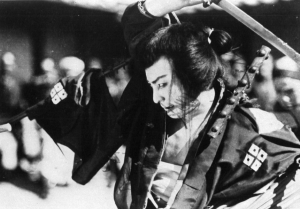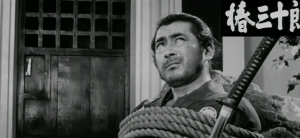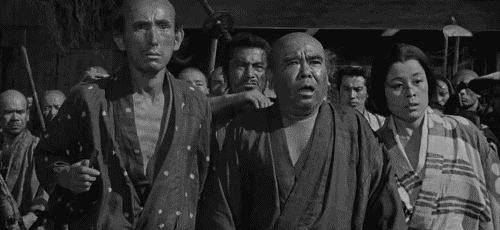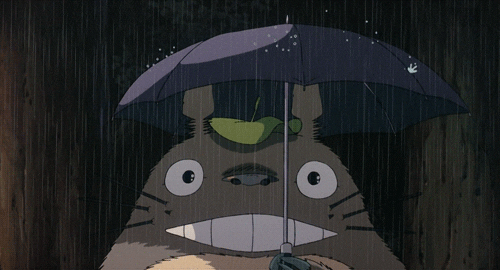A Historical Exploration of Japanese Cinema
While Japanese cinema today is best known for its anime and horror productions, it has a rich and diverse history, constantly exploring old and new genres, often heavily impacted by the nation’s political climate. This influence, and the determination of its numerous film directors, brought a unique perception of the world to Japanese films. In this blog post, we will analyse and explore the history of Japanese cinema from the 19th century to the 21st century and how Japanese cinema has adapted and evolved its industry.
Early Cinema
While Japan has been making high-quality films since the beginnings of cinema, their industry was virtually unknown in the West for over half a century. Much of this is due to the fact that most early films were ‘dismantled after the reels were finished’, and this has left us with very few resources upon which we can draw to piece together Japan’s early cinematic output (Cooper). Yet, whilst we are largely unable to utilise films from this period to further our understanding of Japanese early cinema, there are still numerous sources which detail how the nation began its filmmaking journey, and how it developed in its early years. Records show that the Lumiere brothers’ cinematograph and Thomas Edison’s Kinetoscope, commonly believed to be the first film cameras, made their way to Japan in 1897, roughly a decade after they were unveiled elsewhere (Gerow, 160). Richie notes how the West viewed cinema as an extension of photography at first, before it transformed into a form of entertainment, merging with theatre and vaudeville shows. Japan, however, treated cinema as the latter example right from the beginning, utilising it as an extension of the nation’s much-loved theatre performances, specially Bunraku, traditional Japanese puppet theatre (Richie, 2). This merging of cinema and theatre comes in the form of Benshi, which involved Japanese performers providing live narration for silent films, both for Japanese and imported films. The nation adored this form of entertainment through to the 1920s, which slowed the shift towards sound cinema, as most preferred this classic narration. As a result, Japan didn’t produce sound films regularly until the mid-1930s, almost a decade after Western territories. Indeed, even until 1938, a third of Japanese films were silent (Freiberg). However, this did not hinder development in other areas of film. The 1910s and 20s saw Japanese cinema grow rapidly, with the Nation founding numerous new film studios and producing a wider array of content.
1925-45
Throughout most of the following two decades, Japanese cinema was dominated by two main categories: Gendai-geki films and jidai-geki films. Gendai-geki-films were films in contemporary settings, whereas jidai-geki films were usually set in the Togukawa era (1603-1868) before the country opened up to western influence. A common sub-genre was shomin-geki (home drama) films about families, wherein directors Yasujiro Ozu and Yasujiro Shimazu were the most consistent practitioners. In 1923, the Great Kanto earthquake occurred, devastating Tokyo and irreparably destroying its film studios. For a while, Japan had to rely on foreign imports. Over time, they rebuilt their industry, though foreign audiences were still largely unaware of Japanese films.
The first Japanese film with sound was Heinosuke Gosho’s The Neighbour’s Wife and Mine (1931), a charismatic slice-of-life-comedy. However, as Japan became increasingly militaristic, more and more right-wing propaganda films were made. Humanists, such as Kenji Mizoguchi, avoided government propaganda. He would later direct twin masterpieces Osaka Elegy and Sisters of the Gion (both 1936), telling stories of exploited women in contemporary Japan. Bordwell notes that many films from this period displayed a thorough understanding and development of cinematic techniques that we now consider standard. These include the use of depth staging and even simpler techniques such as narrative continuity and classical staging (Bordwell, 9). This comes in contrast with the beliefs held at the time that Japanese cinema was inferior to the Western cinema in that filmmakers were unaware of crucial filmmaking techniques that were developed and later accepted as standard internationally. When the war arrived, major changes in Japanese cinema occurred. By 1939, all Japanese cinema came under state power and film production slowed down, with only a handful of directors continuing to make films. Yet, with the progression of the war, and Japan’s eventual loss, cinema was pushed aside for numerous years, as the nation attempted to reconstruct itself.
‘Golden Age’
Japanese cinema of the 1950s and early 60s has retrospectively been deemed as the nation’s ‘Golden Age’ of cinema, with their most famous and internationally acclaimed films being produced during this time. International recognition for Japanese cinema began with the release of Akira Kurosawa’s Rashomon, a labyrinthine tale of murder and multiple perspectives, which won the Palme d’Or at the Cannes Film Festival and the Academy Award for Best Foreign Film. From then on, Japanese cinema, and most specifically Kurosawa’s films, became of great interest to Western audiences. They provided new and exciting methods of storytelling very rarely seen in Hollywood or other international film industries. Part of Japanese cinema’s appeal for Western audiences was the wide variety of genres it produced. Indeed, in the 50s alone, monster films such as Godzilla (1954), dramas such as Ozu’s Tokyo Story (1954) and jidai-geki (period films) by directors such as Kurosawa and Masaki Kobayashi were produced, providing audiences with a vast array of stories in which to immerse themselves.
Perhaps the most popular of these period pieces were the samurai films, films set during the 17th to 19th centuries that focused on samurai clans and Ronin (masterless samurai). A plethora of these films was produced during this time, with the ‘relatively low’ costs allowing studios to produce multiple samurai films each year (Rotha). The Zatoichi series, for example, produced 25 films over just 11 years (Rayns). Yet the samurai films that still find their way into filmic discussion nowadays are most often those directed by Kurosawa. Films such as Seven Samurai (1954), Yojimbo (1961) and Sanjuro (1962) are considered by critics to be some of the finest, most accomplished of the samurai films (Sharp), with their blend of action sequences and riveting storytelling transcending beyond national recognition and impressing audiences globally. Indeed, Kurosawa’s influence with these films does not go unnoticed in Hollywood films of the 60s and 70s. His use of widescreen compositions instead of the common academy ratio of 4:3 allowed his action sequences more freedom, even allowing multiple fights to take place within the same shot, as seen often in Seven Samurai. This later led directors such as Sergio Leone Western action sequences in a similar manner, with Eastwood’s character in Leone’s work even being inspired by the Ronin seen in Kurosawa’s films. What’s most striking, however, is how Kurosawa himself was inspired by Hollywood westerns of the 40s and 50s, with critics pointing out John Wayne’s work as his biggest inspiration (Prince, 15).
On the other spectrum of samurai films were those directed by Masaki Kobayashi, the man behind films such as Hara-kiri (1962) and Samurai Rebellion (1967). Whilst Ozu’s films used modern-day settings to comment on social change in Japan at the time, there was often a lack of interrogation and criticism of said change in his work (Mellen). What Kobayashi was adamant on achieving was an unabashed critique of social issues and authority, using his films as a method of combating the higher forces. His seminal work, Hara-kiri, served as a rare example of critique towards samurai clans, rather than an apparent celebration witnessed in Kurosawa’s works. Making films after Japan suffered greatly post-WWII, Kobayashi used Hara-kiri to combat authoritative power at the time, likening the way his country was being run to the hypocritical and dangerous ways of the samurai. His use of widescreen contrasted with Kurosawa’s and was used more as a method of signifying ‘the seeming endlessness, the horizontality, of feudal power’ instead of a method of intensifying action sequences (Mellen). Overall, the Japanese cinematic output of the 1950s and 60s proved that the country was taking huge steps forward in action and dramatic storytelling, establishing the nation’s film industry as sophisticated and socially conscious.
The 80s to 90s – Anime
The word “anime”, although typically attributed to a particular stylised look of Japanese manga art, actually refers to any form of animation. Unfortunately, there is strained uncertainty over what or when the first animated film was released in Japan, due to the typical practice of dismantling film reels once they were finished and the Great Kanto Earthquake as mentioned before. However, the first Japanese anime film known for certain is Dekobo Shingacho – Meian no Shippai in 1917(Dekobo’s New Picture Book – Failure of a Great Plan) (Cooper, par. 3). Anime is often perceived to be a genre, due to it commonly being attributed specifically to Japanese film and television and not just animation as a whole, as well as often having its own category on streaming platforms such as Netflix. However, it is not a genre in itself, which is why such a vast scope of subject matter has been explored through the medium: from robot mecha anime to space-operas, childlike adventure stories to graphic pornography (Kehr, par. 4). It is this mixing of genres that allowed the works of pioneering artists and animators like Osamu Tezuka to burgeon in popularity. Tezuka’s most influential and successful work being the manga series Tetsuwan Atomu (Astro Boy), which originally ran in Japan from 1952 – 1968. The series became an international success, airing in the US in 1963 on NBC, illustrating Tezuka’s reverence as the ‘God of Manga’ (Power, 17).
Although anime in Japan dates back to the early 20th century, the 1980s and 90s were considered the ‘Golden Age’ of anime. This sudden boom in production and demand during this time could be attributed to the rising popularity of VHS, as people could now buy and watch anime in their own homes (Cooper, par. 30). However, the greatest revolution for Japanese animation can arguably be accredited to the founding of Studio Ghibli in 1985. The Tokyo based studio is best known for its animated feature films such as My Neighbor Totoro (1988), Spirited Away (2001) and Ponyo (2008). Hayao Miyazaki, the co-founder of Studio Ghibli, was awarded best film and best Japanese film at the Kinema Junpo Awards, as well as best film at the Mainichi Film Awards in 1989 with My Neighbor Totoro (IMDb). The studio not only topped Japan’s box-office charts but also gained international success and now ‘outside Hollywood, Studio Ghibli is the most profitable animation company in the world, despite making films predominantly for their home market’ (Odell and Le Blanc, 2).
21st Century
By the turn of the 21st Century, Japanese films continued to win a myriad of prizes at festivals and attract large audiences. One dominant figure was Takeshi Kitano, whose films range from violent yakuza (gangster) films to period films and sentimental comedies, such as Hana-bi (1997) and Brother (2000). Japan has also produced a large amount of the world’s most effective horror films, many of which were adapted by Hollywood. For example, Hideo Nakata’s Ringu (1998), Japan’s most successful horror film to date, led to a sequel, a prequel, and an American remake in 2002. Films focusing on different themes were also popular, with the runaway success of Studio Ghibli not just in Japan, but globally, continuing into the 21st century. Hayao Miyazaki’s charming Spirited Away (2001) won the Oscar for the Best Animated Feature, and grossed more than $360m at international box offices and many of Miyazaki’s films endure today due to the studio’s recent decision to allow its films onto streaming websites for the first time. As another modern director dealing with the universal theme of family, the “pathos and poignancy” of Hirokazu Kore-eda’s films’ “has led Kore-eda to be compared to the great master Yasujiro Ozu” (Bradshaw), and much like Ozu, he has seen success on an international stage, winning the Palme d’Or for his 2018 film Shoplifters. In his four-out-of-four star review of Kore-eda’s Still Walking (2008), critic Roger Ebert noted Kore-eda was a “tender humanist” with an “elegant visual style” (Ebert) – and in doing so, helped to spread further international word of this Japanese director. And whilst some critics noted that Shoplifters’ Palme d’Or win was a “rare high-profile victory for an industry whose relevance has dwindled overseas” (Hadfield), with new films from Miyazaki, Miike and Kore-eda, alongside a blossoming scene of new contemporaries, it appears Japanese cinema is certainly in safe hands.
In conclusion, a historical exploration of Japanese cinema has only led to further our beliefs that Japan has provided the world with some of the most unique and important films to date. From its humble beginnings in the late 19th century, cinema has grown in Japan to be the ultimate art form and an avenue through which a plethora of original, inspiring and compelling stories have been told. From silent films and engrossing period films, through to colourful animation and moving contemporary dramas; the cinema of Japan has a rich and endlessly interesting history, and one that deserves every bit of our attention.
Word Count: 2178
Works Cited
Bergen, Ronald. “The Film Book, A Complete Guide to the World of Cinema” 2011 pages 171 and 173
Bradshaw, Peter. “Interview: Hirokazu Kore-eda: ‘They compare me to Ozu. But I’m more like Ken Loach.’” The Guardian, 2015. https://www.theguardian.com/film/2015/may/21/hirokazu-kore-director-our-little-sister-interview
Cooper, Lisa Marie. “The History of Anime”. Rightstuf, accessed 2020, par. 2 – 30
https://www.rightstufanime.com/anime-resources-global-history-of-anime
Ebert, Roger. “Still Walking movie review”. RogerEbert.com, 2008. https://www.rogerebert.com/reviews/still-walking-2009
Freiberg, Freda. `The Transition to Sound in Japan’. History on/and/in Film. 1987. 76-80. Accessed via: http://filmsound.org/film-sound-history/sound-in-japan.htm
Gerow, Aaron. “From Misemono to Zigomar: A Discursive History of Early Japanese Cinema.” Silent Cinema and the Politics of Space, edited by Jennifer M. Bean, Indiana University Press, 2014, pp. 157-185
Hadfield, James. “Japan’s decade of closed country cinema”. JapanTimes.com, 2019.
Kehr, Dave. “FILM; Anime, Japanese Cinema’s Second Golden Age”. The New York Times, accessed 2020,
https://www.nytimes.com/2002/01/20/movies/film-anime-japanese-cinema-s-second-golden-age.html?_r=0
Mellen, Joan. “Harakiri: Kobayashi and History.” Criterion.com, 4 Oct. 2011. https://www.criterion.com/current/posts/381-harakiri-kobayashi-and-history
Odell, Colin and Michelle Le Blanc. Studio Ghibli: The Films of Hayao Miyazaki and Isao Takahata. Kamera books, 3rd Edition, 2019, p 2
Power, Natsu Onoda. God of Comics: Osamu Tezuka and the Creation of Post-World War II Manga. University Press of Mississippi, 2009, p 17
Prince, Stephen. The Warrior’s Cinema: The Cinema of Akira Kurosawa. Princeton University Press, 1991.
Rayns, Tony. “Tony Rayns on the Meaning of Zatoichi.” Criterion.com, 14 Sep. 2016. https://www.criterion.com/current/posts/4219-tony-rayns-on-the-meaning-of-zatoichi
Richie, Donald. Japanese Cinema: An Introduction. Oxford University Press, 1990
Rotha, Paul. The Film Till Now: A Survey of World Cinema. Twayne Publishers, Inc., 1960. Accessed via: http://lantern.mediahist.org/catalog/filmtillnow00roth_0907
Sharp, Jasper. “10 Great Samurai Films.” Bfi.org.uk, 10 Aug. 2018. https://www.bfi.org.uk/news-opinion/news-bfi/lists/10-great-samurai-films
(Unknown Author). “My Neighbor Totoro (1988) Awards”. IMDb, accessed 2020 https://www.imdb.com/title/tt0096283/awards







